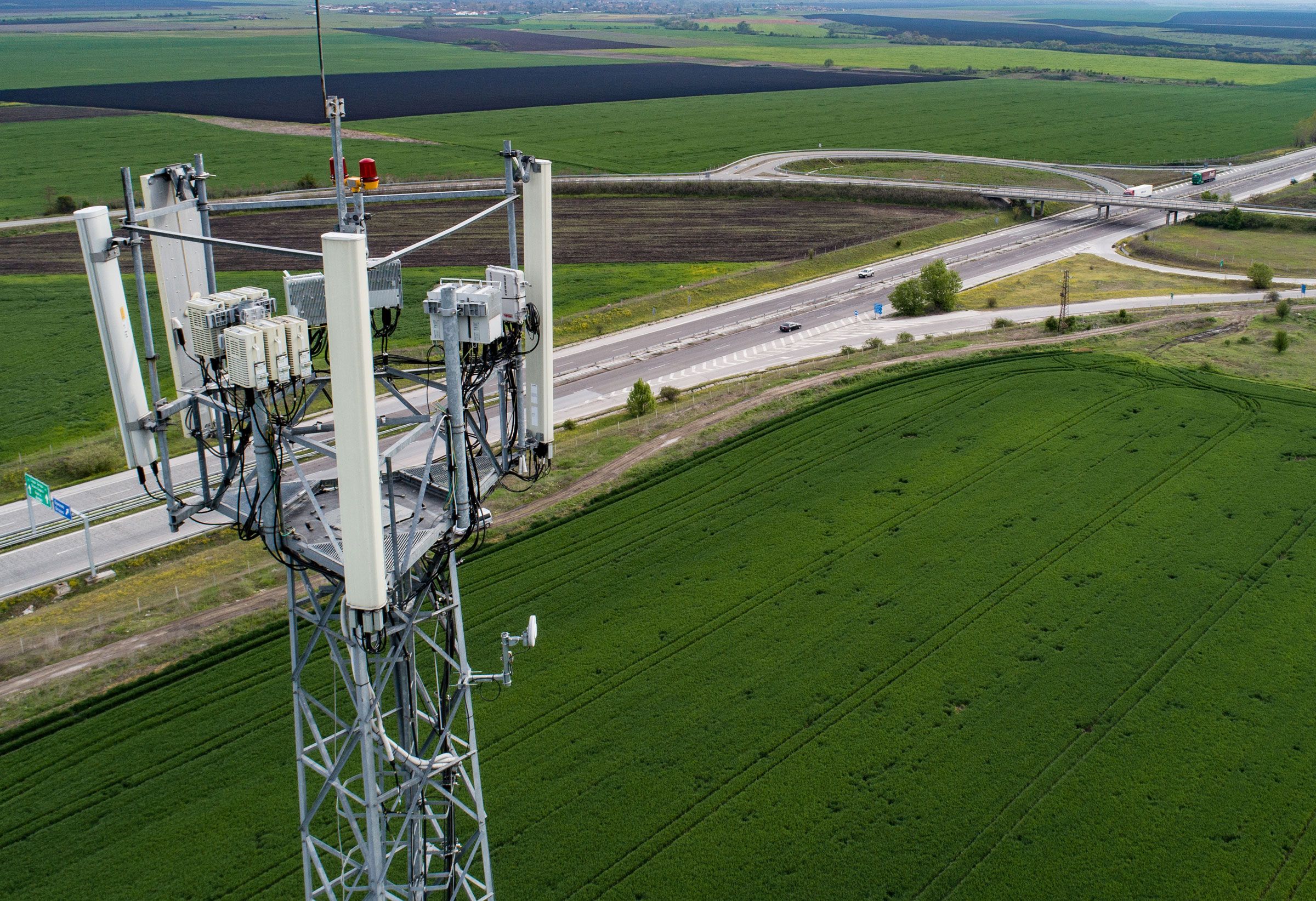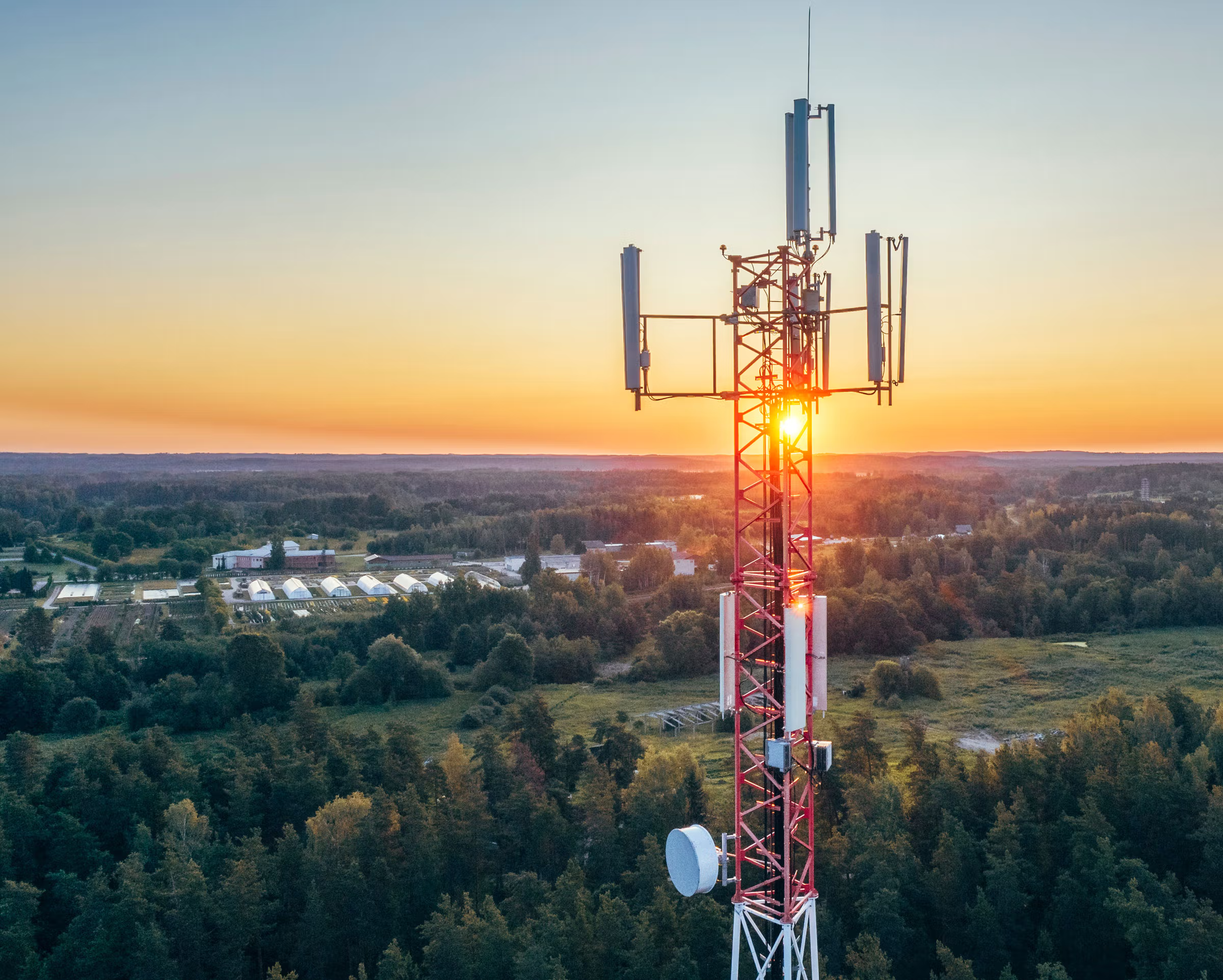
5G is the fifth generation technology standard for broadband cellular networks, which cellular phone companies began deploying worldwide in 2019. It is the successor to the 4G networks, which currently provides connectivity to most cellphones.
5G is offering faster download speed and reduced latency time (time delay required to transmit data from the source to the destination) — as well as much higher connection density of devices per km2. This greater performance will accelerate the development of many new and existing technologies.
Many people find the transition by the broadband cellular networks from 3G to 4G — and now to 5G — confusing and do not understand the reasons behind these changes. This issue of EUC will address some of this confusion and discuss a number of ways that new generations cellular broadband networks and devices are important to virtually every industrial and commercial business, as well as many aspects of our everyday lives.
What is 5G infrastructure?
5G, which is the hot topic around the globe, is the fifth generation technology standard for broadband in the telecommunications industry and the successor to the 4G networks which provide connectivity to most current cellphones. 5G networks are predicted to have more than 1.1 billion subscribers worldwide by 2025, according to the GSM Association (Global System for Mobile Communications). Like its predecessors, 5G networks are cellular networks in which the service area is divided into small geographical areas called cells. All 5G wireless devices in a cell are connected to the internet and telephone network by radio waves through a local antenna in the cell area.
Standalone and non-standalone 5G network infrastructure
Non-standalone infrastructure (NSA) relies partly on existing 4G LTE infrastructure, but also utilizes some new technology like 5G New Radio (NR). According to 3GPP standards, NSA architecture has the 5G RAN and the 5G NR interface working together with existing LTE infrastructure and core network. The 5G standard also states that this means while only LTE services are supported, the network has the capabilities offered by 5G NR, like lower latency.

Non-standalone (NSA) network architecture has dominated the market with a revenue share of over 92.9% in 2020, according to Grand View Research, Inc. This is attributed to the early rollout of the non-standalone network across the globe — which is generally deployed in integration with the existing LTE infrastructure. Several major service providers, including AT&T, Verizon and China Mobile, have deployed 5G NSA network models for basic use.
Standalone infrastructure is a 5G network that does not rely on LTE networks and has its own cloud-native network core that connects to the NR. It is expected that network carriers will utilize at standalone infrastructures after moving through an NSA infrastructure. Using an NSA approach allows carriers the opportunity to offer 5G-like experiences while they build out the needed physical infrastructure of a 5G network. According to the 3GPP Release 15, the standalone deployment option is composed of user equipment, the RAN — which includes the NR and the 5G core network. The 5G core network relies on a service-based 5G architecture framework with virtualized network functions.
Additionally, It's a major upgrade for the 5G Core Network in order to work better and faster: connecting the internet and cloud services quickly and reliably. By placing servers closer to users, it will take out latencies and speed up responses. It also manages mobile calls, data, and internet connections most effectively, thus enabling the network to run smoother and stronger for all. All in all, this means that every device enjoys faster and more reliable service.
5G network tower infrastructure
Macrocells are the traditional cell towers that serve wide areas. In a 5G network, network functions that typically run on hardware become virtualized, running as software. Until 5G networks reach their full potential and become self-sufficient, most carriers will be using existing 4G LTE radio access networks (RANs) augmented with many new antennas. This allows carriers to make the transition from 4G to 5G by offering improved services while the new physical infrastructure is built.
5G Deployment is Challenging
Deploying 5G infrastructure is challenging because high-frequency waves, which can carry lots of data, are easily blocked by buildings, trees, and weather. To overcome this, a dense network of small antennas needs to be installed on streetlights, buildings, and other structures, rather than relying on traditional cell towers. This requires careful planning to avoid dead zones and results in higher costs for equipment, installation, and maintenance. Despite these challenges, solving them is necessary to take full advantage of 5G’s fast speeds and low latency.
5G infrastructure hardware
5G infrastructure hardware is mainly a combination of: Radio Access Network (RAN); a core network, which offers numerous services to customers who are interconnected by the access network; a backhaul, which connects the backbone and the edge networks; and a transport, which connects a 5G RAN and the core network. The backhaul and transport network includes fiber optics or microwave antennas.
In the hardware segment, RAN dominated the 5G infrastructure market with a share of 50% in 2024, according to Grand View Research, Inc. This has attributed to the robust deployment of 5G RAN with several small cells and macrocell base stations across the globe.
The trend of deploying virtual and centralized RAN is rapidly increasing among network service providers to reduce the overall infrastructure costs and network complexities. In addition, the use of Software-Defined Networking (SDN) technology to improve the operational efficiency of virtual RANs is expected to play a crucial role in the overall segment growth from 2021 to 2028.

Frequency band classifications
Sub-6 GHz bands are used where the frequency transmitted from cell phone towers are less than 6GHz frequency. The sub 6GHz spectrum is the candidate for early deployment of 5G networks across the globe. It employs an unused part of the spectrum below 6GHz range and can support higher bandwidth than LTE frequency bands. Sub-6GHz dominated the market for 5G infrastructure with a share of 84.3% in 2023.
mmWave frequency bands are high band frequencies that provide enhanced bandwidth capacity with very low latency. These spectrum bands would be mainly helpful in applications where ultra-reliable connectivity is a prerequisite, especially in remote patient surgeries and Vehicle-to-Vehicle (V2V) connectivity.
5G networks use millimeter waves (mmWave) that can send data at a very high speed, but only over a small distance and without obstacles. Therefore, mmWave is best in crowded city spaces, for effective fast data speeds. Since the range is very short, small cell antennas are necessary.
These very high-frequency signals are transmitted and received by small cell antennas, which make the connection strong and reliable in the short range of mmWave. Small cells are essential in building the dense network of transmitters needed to obtain good 5G coverage, especially in crowded places like stadiums and city centers.
Covid-19 delays implementation
The outbreak of Covid-19 certainly delayed the implementation of the 5G infrastructure. The pandemic caused disruptions in testing and trials required for verifying the processing performance and stability of 5G standalone networks. In addition, the pandemic has caused the US and China, among other countries, to experience a decline in the exports of telecom equipment for 5G New Radio Technology (NR) to the global market.
Despite pandemic setbacks, several challenges hinder 5G infrastructure development: intense competition for higher spectrum bands, the need for numerous antennas and base stations due to interference issues, the high costs of upgrading infrastructure, navigating complex government regulations for cybersecurity and spectrum availability, and ensuring ultra-secure cloud-based and data virtualization services to defend against cybersecurity threats associated with increased connectivity.

Recovery and innovation
In spite of the pandemic, the continued emphasis on improving communications for energy monitoring and management, coupled with the need to gain better control over the energy generation and distribution network, is expected to boost the deployment of 5G infrastructure over the next 7 years. Many published industry reports suggest the global 5G infrastructure market size was valued at nearly 3-billion USD in 2020 — and is expected to expand at a compound annual growth rate (CAGR) with estimates ranging between 49.8% to 71.2% growth from 2021 to 2028.
The rapidly growing industrial digitalization has paved a new revenue stream for service providers across the globe. The rising demand to establish continual communication among industrial applications — like collaborative/cloud robots, automated guided vehicles (AGVs), wireless cameras and others — is expected to propel the growth of the industrial segment for years. The ability to provide uninterrupted connectivity between machines to machines in the manufacturing processes increases the need for the ultra-reliable high frequency with low latency connectivity.
The deployment of 5G infrastructures is increasing across government and public safety facilities because of the established need for quick communication with first responders during emergencies. In the wake of the ongoing pandemic, the demand for next-generation, high-speed networks is expected to surge.
The energy sector is anticipated to show substantial growth due to the expanding need for high-speed internet connectivity across energy generation and distribution applications. In addition, the growing demand to provide improved connectivity to ships and containers/vessels for efficient monitoring from remote locations is further expected to fuel the adoption of 5G technology and related infrastructure in the transportation and logistics sector.
The healthcare industry is beginning to emphasize the importance of concepts like remote diagnosis, treatment and surgeries to the patients. This means the delivery of data and connectivity during remote patient surgeries must be reliable and constant. The 5G next-generation technology and related infrastructure is expected to help drive market growth in the healthcare industry during the coming years.
Delivering high bandwidth services to consumers, businesses and industries

A major change and one advantage of the new 5G networks is that they have greater bandwidth, giving higher download speeds — eventually up to 10 gigabits per second (Gbit/s). With increased bandwidth, the 5G networks will be used as general internet service providers for laptops and desktop computers, competing with existing ISPs such as cable internet. In addition, the growing demand for enhanced bandwidth connectivity with low latency for many mission-critical applications — such as precision manufacturing, medical diagnostics and surgery, vehicle-to-everything (V2X), drone connectivity and many other applications — will contribute to market growth.
5G technology will provide improved user experience, including Ultra-High Definition (UHD) video, seamless video calling, as well as Virtual Reality (VR) and Augmented Reality (AR) for gaming. 5G will make it possible to create new applications on the Internet of Things (IoT) and improve connectivity between machines to machines. 4G cellphones are not able to use the new networks, which require 5G enabled wireless devices. There are a variety of 5G enabled cellphones available from your communication service providers today.
Significant investments are being made by key communication service providers worldwide to acquire low and mid-band frequencies and to deliver high bandwidth services to consumers, businesses and industries. Recently, governments across key nations such as the US, China, Japan, and South Korea released sub-6 GHz frequencies to provide highspeed internet services in their countries.
Telecommunications analysts can greatly improve 5G network infrastructure by using advanced data analytics. They can process large amounts of data quickly for real-time insights, visualize network performance over time and across different locations to spot strong and weak areas, and plan the network efficiently by simulating different scenarios. Analytics are also used in detecting and reducing interference, as well as predicting potential future issues for proactive maintenance. Generally, these techniques lead to a better and optimized 5G network.
Electrical machine controls for over four decades
We hope you have benefited from this issue of EVERYTHING UNDER CONTROL and that this information will clear some of the confusion surrounding how 5G broadband cellular technology works. It is critically important, as we all move forward in today’s business world, to understand how the 5G network is of value to industrial and commercial businesses of all types — and how will it improve many aspects of our everyday lives.
In future issues, we will present information on the latest trends and advancements for a wide variety of industries that depend on c3controls products as an integral part of their machine controls.
OUR PRODUCTS
COMPANY / SERVICES
c3controls Headquarters, USA
664 State Street
Beaver, PA 15009
TEL 724.775.7926
FAX 724.775.5283